Speaking of Tianjin, it is a relatively low-profile Chinese city with capital but not publicity. It seems that Tianjin people are also willing to live their own lives in peace and stability. They are never rushed or panicked. Even when major events happen, they would say “Come on, that’s not so serious!” Tianjin is quite a unique city. There are a large number of European-style buildings in which many celebrities once lived. Now the bustling has faded, but these well-preserved buildings have become places for people to visit to learn about that period of history.
Tianjin Eye
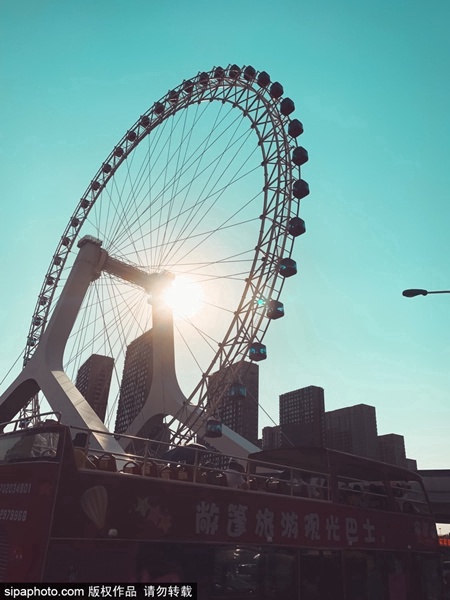
Tianjin Eye, the nickname of Tianjin Yongle Bridge Ferris Wheel, crosses the Haihe River and connects Hebei District and Hongqiao District. It is a ferris wheel that combines the functions of sightseeing and transportation, and is one of Tianjin’s landmarks.
It is 120m high, with 48 transparent cabins, each holding 8 people. The cabin is comfortable and spacious, with air-conditioner to control the temperature. It can accommodate 384 people for sightseeing at the same time, and its operating hours are arranged according to different seasons. Tianjin Eye is driven by electricity and rotates at a constant speed, about 30 minutes or so. At the highest point, passengers can see the scenery in a radius of tens of kilometers, and the scenery of Haihe River can be seen in full view.
It does not rotate fast, and you can see the cars on both sides galloping by. It’s very enjoyable and is suitable for parents to bring their children.
Tianjin Eye, in addition to being fun during the day, is also unique at night! When the night is dazzling and the lights are charming, holding hands with the one you love to make a wish at the top of the Tianjin Eye, maybe your wish will come true!
To pay tribute to the medical workers who are fighting on the front line of the epidemic, from its reopening until December 31, 2020, Tianjin Eye will implemented free tickets for medical workers nationwide.
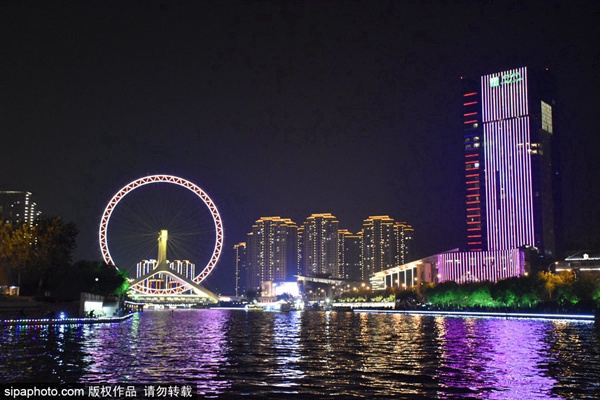
To avoid long lines, it would be better for you to make an appointment before you go!
Address: Yongle Bridge, Sancha Hekou, Hongqiao District, Tianjin
Five Great Avenues

The Five Great Avenues are located in the southern part of the down town Tianjin. Five east-west parallel streets are named Chengdu, Chongqing, Dali, Munan and Machang, making up the most complete foreign-style building complex in Tianjin. Tianjin people would call it “Five Great Avenues”. There are more than 2,000 garden-style houses with different national architectural styles built in the 1920s-1930s on the Five Great Avenues, with a construction area of more than 1 million square meters. Among the more than 300 typical buildings, there are 89 British-style buildings, 41 Italian-style buildings, 6 French-style buildings, 4 German-style buildings, 3 Spanish-style buildings, as well as numerous Renaissance, classical, eclectic, Baroque, courtyard-style, and Chinese-Western architectures. It is therefore known as the World Architecture Expo Garden. In addition to buildings from various countries, there are countless celebrities’ former residences located on the Five Great Avenues. In 2011, the Fifth Great Avenues area was designated as a historical and cultural district of Fifth Great Avenue by Tianjin Planning Bureau.
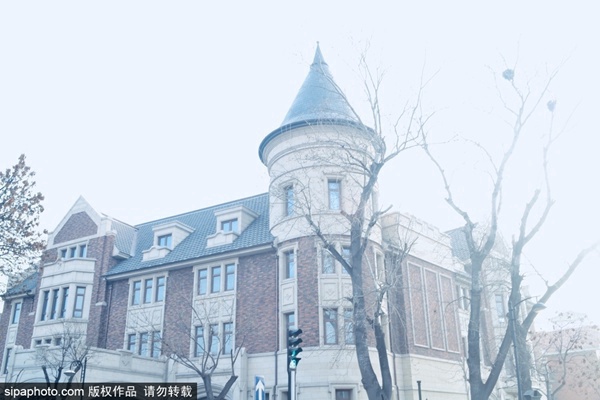
Each building here carries a fascinating story of a person’s turbulent life.
Five Great Avenues Museum
The Five Great Avenues Museum is a small private museum with nine exhibition halls. Nearly a thousand pieces of cultural relics restore the lives of the people who lived here in the early 1900s.
There are teak carved long benches shipped from the UK; fireplaces and antique wall clocks hidden by a warlord family; peculiar styles and full of century-old European-style furniture and so on. In addition, the museum reproduces the interior scenes of the mansion a hundred years ago. From the electric door switch, the latch door handle, to the faucet, the floor and the bricks, all are the old things that were used in the Five Great Avenues.
Stroll in the museum while listening to the explanation, you can learn about the history and changes of the Five Great Avenues.
Address: Second Floor, Chongqing Road Minyuan Plaza, Heping District, Tianjin
Former Residence of Sun Dianying
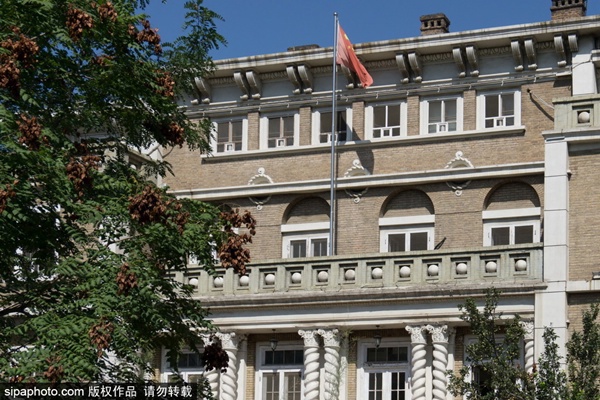
The former residence of Sun Dianying is a three-story brick-wood structure building (with a basement), with a red-tiled roof and clear-water brick walls. The building is tall and magnificent. Their façade decorations include arched windows, rectangular windows, and twisted rope double columns, reflecting eclectic architectural characteristics.
The former residence of Sun Dianying is a British classical architectural style. The shape of the entire building is staggered and unique, which is quite elegant among private villas. It has four floors. The platform on the second floor has eight white pillars standing up to the third floor, which looks simple and elegant. The four rooms in the middle of the third floor have four doors leading to the platform and the east and west ends of the fourth floor. There is a platform on the east and west side of the fourth floor.
Since the early ages of “Tianjin Foreign-style Buildings”, there is probably no other owner as controversial as Sun Dianying, and no other foreign-style house has such an unbearable history like the former residence of Sun Dianying at No. 20 Munan Road.
Address: No. 20, Munan Road, Heping District, Tianjin
Former Residence of Zhang Zuoxiang
Built in 1929, this Western classical three-story brick-wood structure building has multi-sloping tile roof, sloped steps, with basement, external eaves wall with uneven, inlaid cement fancy, three-story square windows and arched windows contrast. The living room on the first floor is more than 60
㎡, with Roman columns, arch voucher, fancy column caps, and large baroque glass mirrors made in Belgium.
Address: No. 4, Chongqing Road, Heping District, Tianjin
Mansion of Prince Qing
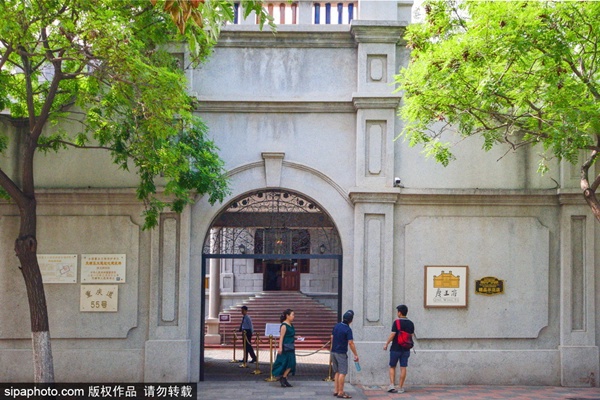
Prince Qing’s Mansion is located at No. 55 Chongqing Road, Heping District, Tianjin. It was built in 1922. It is a national key cultural relics protection unit and a historic building with special protection grades in Tianjin. It is also a well-known scenic spot in Tianjin Five Great Avenue Cultural Tourism Zone.
The Mansion of Prince Qing was built by the Qing eunuch Xiao De Zhang, and was later purchased by Prince Qing, Zaizhen, who lived in Tianjin. Therefore, the building became know as the “Mansion of Prince Qing”. The building is a two-story brick-wood structured building (with a basement), with open colonnades on both the first and second floors. The shape of the building is simple and lively, the interior decoration is luxurious, and it is a combination of the Chinese and Western charm.
This small exhibition hall introduces the history of the Mansion in both Chinese and English with pictures and texts. It is divided into three sections: “Xiao De Zhang’s Building”, “Prince Qing’s Residence”, and “Changes and Inheritance”. It also displays some items that are worthwhile for a closer look.
The former residences of famous historical celebrities on Five Great Avenues are far more than these. You may wish to stay for a few days to appreciate the historical heritage of Tianjin.
Touring the Avenues in a horse-drawn carriage feels like a unique trip back to the last century. In addition, you can also take a rickshaw or a battery car. Of course, there are tour guides introducing this area throughout the whole process. If you are free, you can ride a bicycle around the western-style buildings, which is also very interesting; if you are not in a hurry, we would recommend that you walk and stroll slowly.
Address: No. 55, Chongqing Road, Heping District, Tianjin
Italian Style Street
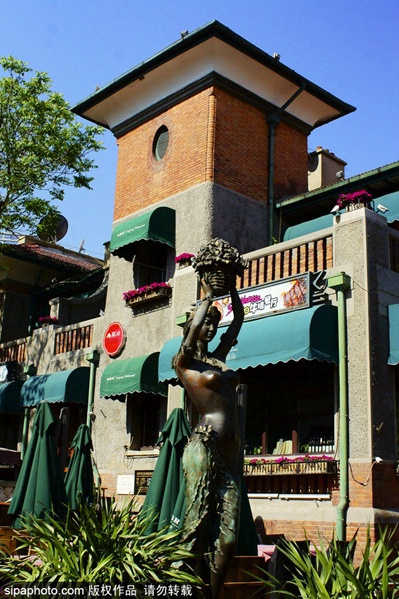
Tianjin Italian Style Street is located in Hebei District of Tianjin, the former Italian concession. The square area enclosed by the four roads of Wujing, Bo’ai, Shengli and Jianguo in Hebei District is collectively called the Italian Style Street. There are nearly 200 well-preserved European buildings in this area.
Tianjin Italian Style Street aims to embody the strong Italian style and build it into a comprehensive multi-functional area integrating tourism, commerce, leisure, entertainment and cultural expo. The scenic area is close to the Haihe River, with a large number of Italian-style buildings. In spring, summer and autumn, the new Italian Street in the old Italian concession in Tianjin has made it a city that never sleeps.
There are clusters of small Italian-style houses here, which are completely different from the Bank on Jiefang Road, making you feel as if you are in the old town of Marco Polo’s hometown, warm and lovely. In fact, the circular square with water jets in the centre of the block is named Marco Polo. In the ancient Italian concession, there are also Liang Qichao’s Ice-drinking Room, Cao Yu’s former residence, Li Shutong’s former residence, and Yuan Shikai’s and Feng Guozhang’s mansions. There are not many tourists during the day, so you can enjoy taking photos on the street.
There are many celebrities’ former residences here, so just take your time!
Former Residence of Liang Qichao

Liang Qichao’s former residence and his Ice-drinking Room are located at No. 44 and 46 Minzu Road, Hebei District, Tianjin, covering an area of 2500
㎡. The “Tianjin Liang Qichao Memorial Hall” was built in Liang Qichao’s original residence in October 2002.
Liang Qichao (1873-1929), whose is also known as Zhuoru, is the owner of the Ice-drinking Room. He is a famous thinker, politician, social reformer and encyclopedic academic master in modern China. After returning from exile for 15 years in 1912, he settled in Tianjin in 1915.
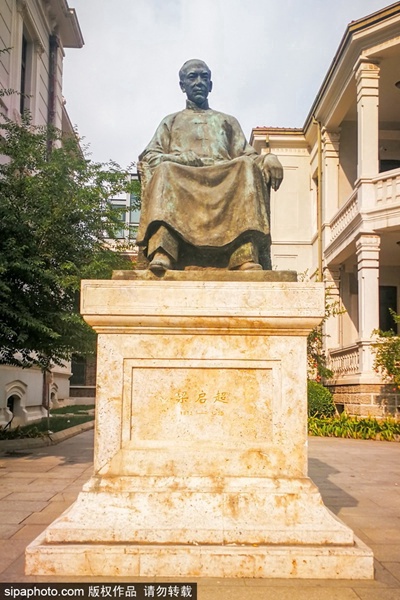
Liang Qichao Memorial Hall consists of two parts. The exhibition is located in the “Former Residence” building. With the theme of “Liang Qichao and Modern China”, it is divided into 12 exhibition rooms. The exhibitions include Gongche Shangshu Movement (the first modern political movement in China), the Reform Movement of 1898, the National Defence War, the Paris Peace Conference, etc. The last exhibition room shows the story of Liang Qichao’s family and his nine children. Images, texts, and relics are combined to provide rich content. The Ice-drinking Room study has been restored, and is a two-and-a-half-story Renaissance Italian-style building. The first floor is Liang Qichao’s working area, with the study as the theme. The second floor is Liang Qichao’s living area. The interior furnishings combine both Chinese and Western features, blending Chinese scholarship and Western style. This is the place where Liang Qichao lived and worked in the last two years. It is also the birthplace of famous articles such as Chinese Cultural History, Confucian Philosophy, Xin Jiaxuan Chronicle (unfinished).
Former Residence of Li Shutong

The former residence of Li Shutong was originally located at No. 60 Liangdian Street, Hebei District. It is a large house composed of four courtyards built in the Qing Dynasty. With more than 60 rooms, it covers an area of 1,400 ㎡. There are verandas and small gardens in the courtyard, the interior furnishings are exquisite and the environment is elegant. There is a Western-style study room in the house named “Yiyuan”, which was built by Li Shutong when he returned to his hometown from his studies in Japan in 1910, to show his aspirations for his ambitions. The courtyard is surrounded by a verandah with carved beams and painted columns. The interior furnishings are exquisite and the environment is elegant and pleasant.
Later, as households’ background are complicated and the buildings have been disrepair for a long time, No. 60 Back Street of Liangdian gradually lost its original appearance. On December 31, 2007, the Tianjin Municipal Government started the reconstruction of Li Shutong’s former residence on the original site of Laoliangdian Backstreet, and then decorated and arranged the interior of the former residence, establishing the “Master Hongyi - Li Shutong’s Former Residence Memorial Hall”. It was oficially opened to the public on the 30 Dec. 2011.
The reconstructed Li Shutong’s Former Residence Memorial Hall is located at the intersection of Haihe East Road and Binhai Road, Hebei District, Tianjin. It covers an area of 4,000 ㎡and is divided into two parts: garden landscape and former residence.
Li Shutong, Master Hongyi, a native of Pinghu, was a pioneer of the new cultural movement in modern China and a well-known Buddhist monk. He was born in a family of scholars, and is both familiar with history and today’s social events. He once travelled to Japan and became specialized in music and painting. He founded China’s first drama club “Chun Liu Club”, and starred in La Traviata, Black Slaves Calling Heaven and other well-known dramas. Later, he was ordained as a monk at Hupao Temple in Hangzhou, and went south to Quanzhou, Fujian. He spent his entire life studying Buddhist precepts and became a master. Li Shutong spent his teenage years at No. 60 Liangdian Street, Hebei District, Tianjin, and left in his twenties. It was there that he accumulated and consolidated his basic knowledge and skills of literary and artistic.
Address: No. 60 courtyard, Liangdianhou Street, Hebei District, Tianjin
Former Residence of Cao Yu
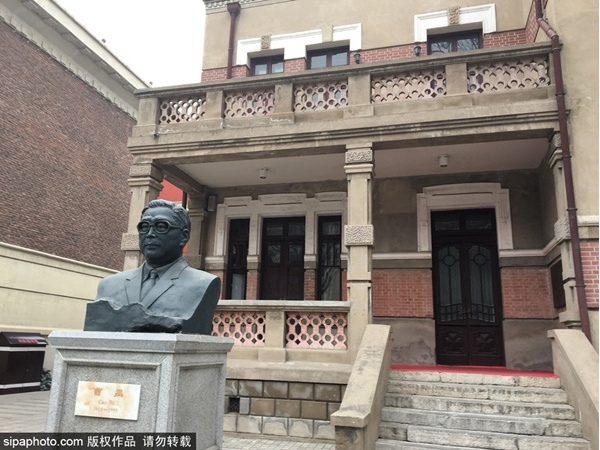
The former residence of Cao Yu is located on the east side of Minzhu Road, Hebei District, Tianjin. Sitting east facing west, this two-story brick-wood structure was built in the late Qing Dynasty. It reaches No. 21 courtyard wall on Minzhu Street in the east, No. 27 courtyard wall on Minzhu Street in the west, and No. 23 courtyard wall on Minzhu Street from the north to the south. The existing small courtyard is narrow, with a two-story building and five bungalows. Courtyard No. 23 (front yard) faces north, with aisles on two floors and two independent small buildings at both front and back.
Courtyard No. 23 covers an area of 510.89 ㎡, with a construction area of 483.29 ㎡. The No. 25 courtyard covers an area of 401.55 ㎡, with a construction area of 343.82 ㎡.
Address: No. 7-9 Minzhu Road, Hebei District, Tianjin



